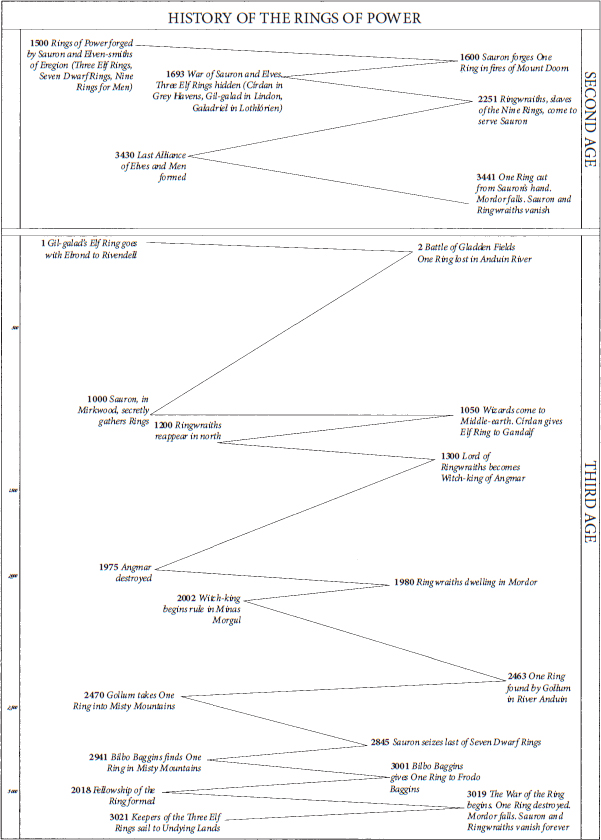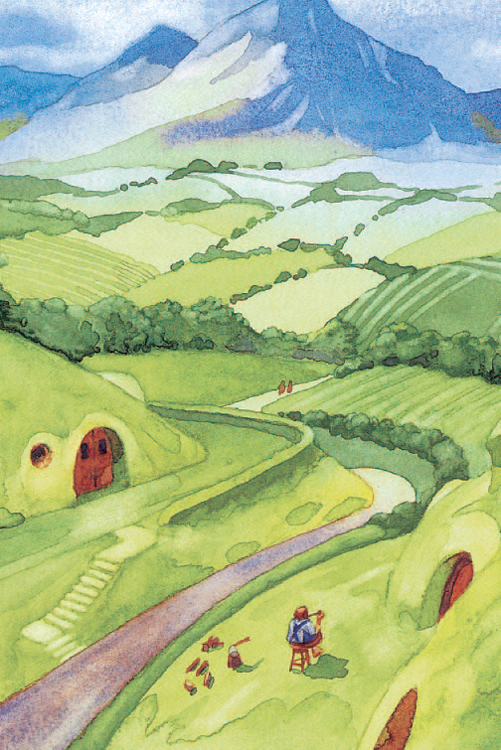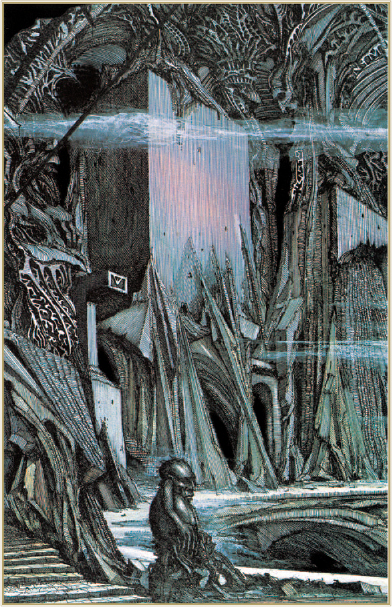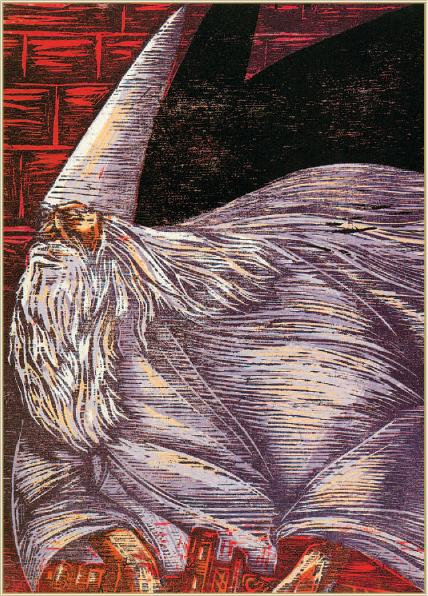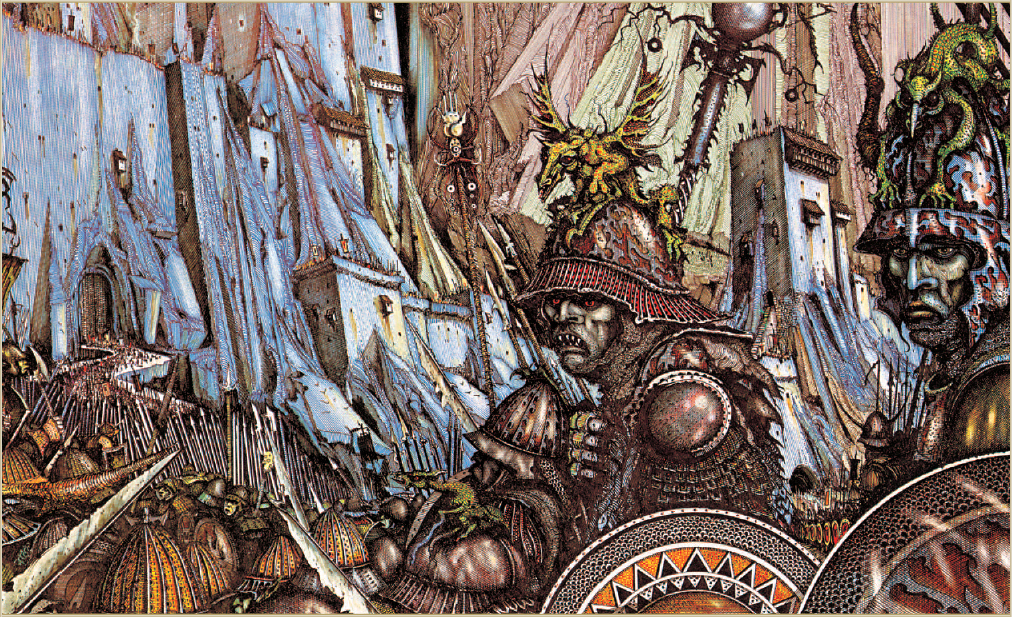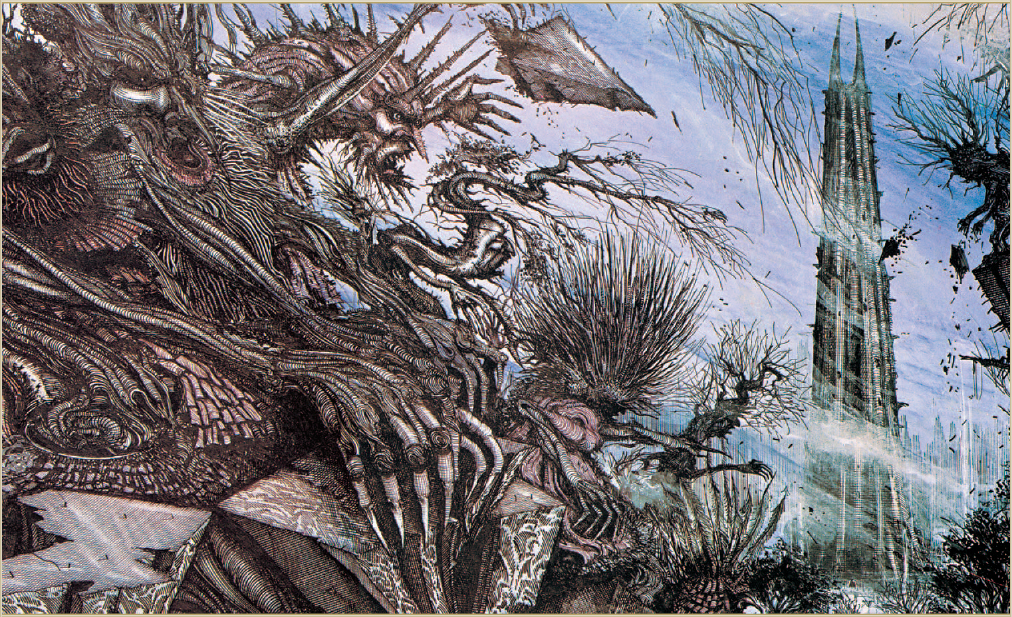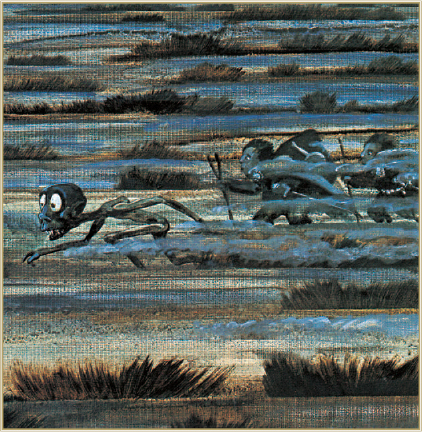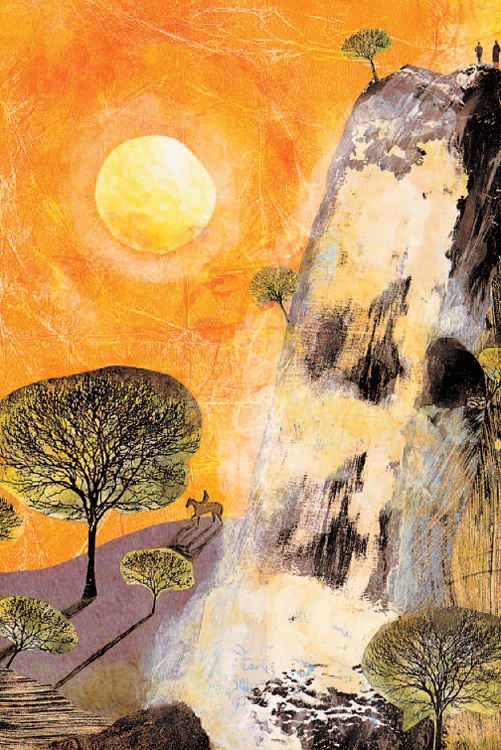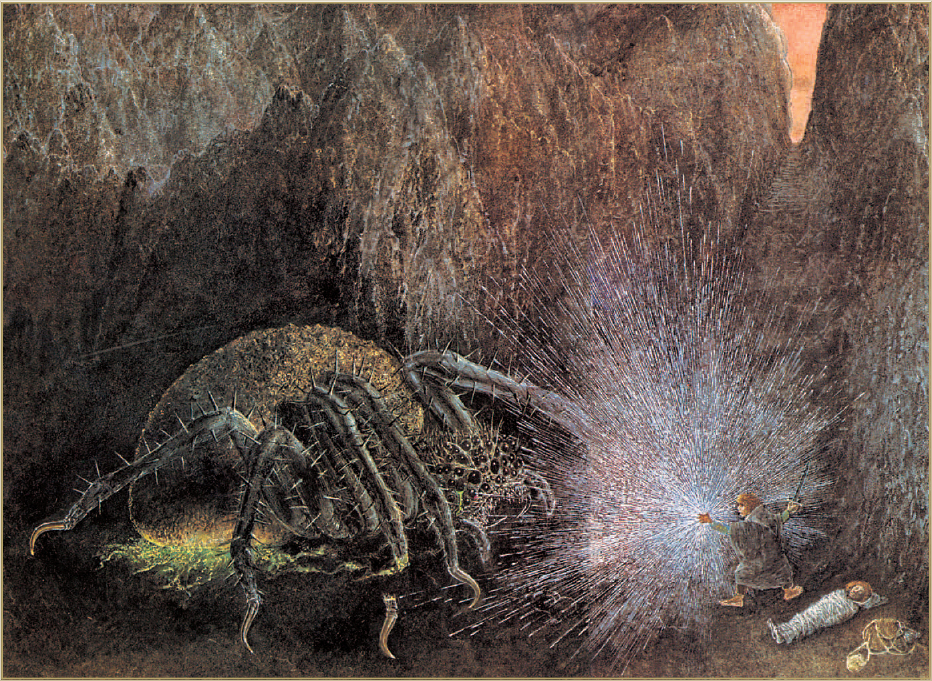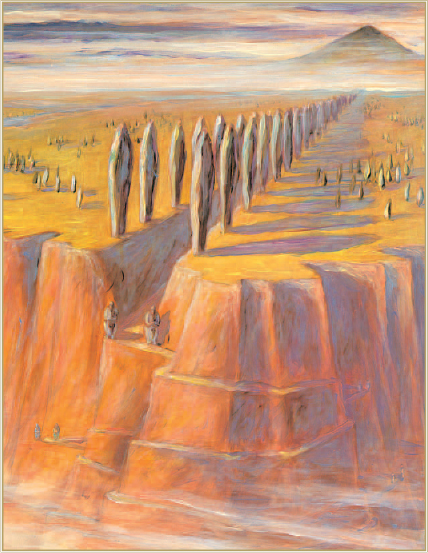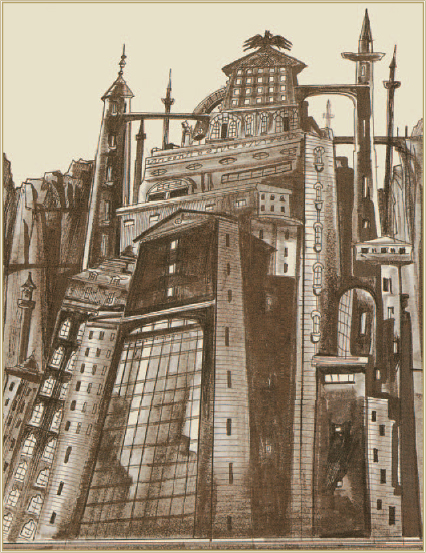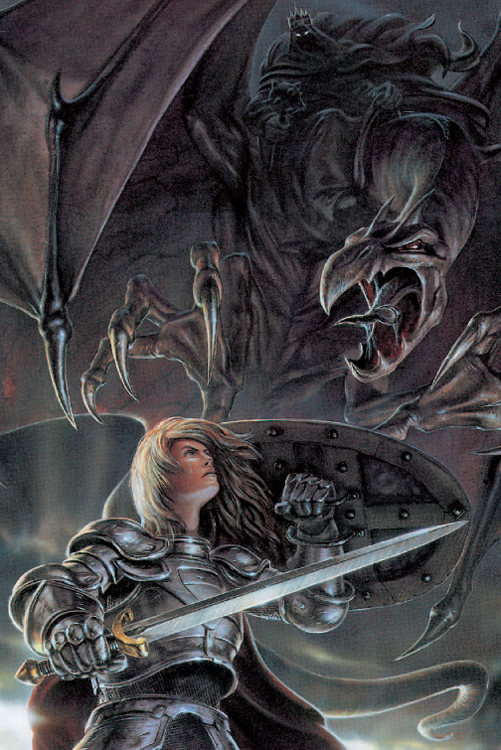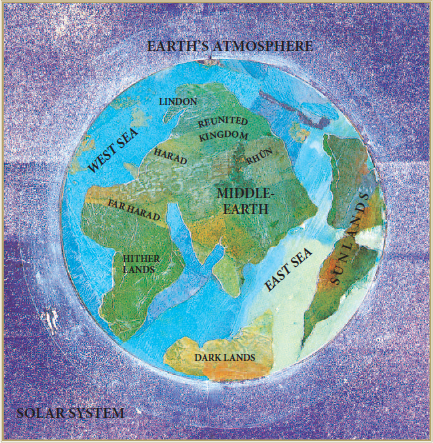The Quest of
the Ring

The green and pleasant lands of the Shire had been the homeland of the Hobbits since the seventeenth century of the Third Age of the Sun. Here lived Bilbo Baggins, who joined the Quest of Lonely Mountain and on that adventure acquired a magic Ring. This chance discovery drew Bilbo, his heir Frodo Baggins and all the Hobbits of the Shire into the greatest drama of that Age. So it was that the meekest and least of all peoples came to hold the fate of all the world in their hands.

To the east of the Shire and the Old Forest lay the Barrow-downs, an ancient burial ground. There were no trees or water on these downlands, only grass covering dome-shaped hills that were ringed and crowned with stone monoliths. Considered by many during the Third Age to be the most ancient burial ground of Men on Middle-earth, these barrow graves of royal ancestors were revered by the Dúnedain of Arnor. By the time of the Ring Quest, these burial chambers were haunted by evil spirits known as Barrow-wights, who had their origin in the Witch-king’s realm of Angmar. Passing through this haunted land, the Ringbearer, Frodo Baggins, was drawn into a burial vault and succumbed to the hypnotic spell of these undead phantoms.

The Ford of Bruinen was an enchanted river crossing guarded by Elvish powers. For in crossing the river at this ford, one entered the hidden refuge of Imladris. Also known as Rivendell, this was the domain of Elrond Half-elven, who possessed one of the Three Rings of the Elves. It was by the enchantment of Elrond’s ring that the Ford was guarded and the refuge of Rivendell remained hidden from the world. During the Quest of Lonely Mountain, after their passage though the Trollshaws, Thorin and Company were permitted to cross the Ford and enter Rivendell. While in the Quest of the Ring, it was at the Ford of Bruinen that Frodo Baggins was attacked by the Nine Black Riders, those terrible undead servants of Sauron also known as the Ringwraiths.
The Last Homely
House East of the Sea
In the wake of the War of Sauron and the Elves during the Second Age, Master Elrond Half-elven led the surviving Elven-smiths of Eriador to the refuge of Rivendell in the steep, hidden valley of Imladris at the foot of the Misty Mountains. Here was hidden the House of Elrond. Known as the ‘Last Homely House East of the Sea’, it was a house of wisdom and great learning, and served as a refuge for all Elves and Men of goodwill. It was here that Bilbo Baggins found peace after his adventures, and it was here that Frodo Baggins found refuge after the attack of the Ringwraiths at the Ford. It was also in Rivendell where the Fellowship of the Ring was formed, and the Quest of the Ring was planned. After the War of the Ring, Elrond left Rivendell for the Undying Lands, and although many of the other Elves remained for a time, the refuge was finally abandoned in the Fourth Age when the last Elven ship departed from the Grey Havens.
Most ancient and famous of all the Dwarf kingdoms was that realm originally called Khazad-dûm, the ancestral home of Durin the Deathless, the first of the seven Fathers of the Dwarves. Through five Ages of Stars and three Ages of the Sun the Dwarves of Khazad-dûm were prosperous and strong. In the Second Age of the Sun, these were the Dwarves who had a long friendship with the Gwaith-i-Mírdain, the Elven-smiths of Eregion, who forged the Rings of Power. But in the Accursed Years of Sauron’s dominion in the Second Age, the Dwarves had closed their great doors to the world. At this time, the mansion was renamed Moria, the ‘dark chasm’.
Yet still the Dwarves quarried and worked the forges beneath the Misty Mountains until 1980 of the Third Age of the Sun. In that year the Dwarves delved too deep beneath Mount Barazinbar, and an entombed Balrog was released within the halls of Moria. So terrible was the Balrog’s strength and wrath that the Dwarves were either slain or driven from their kingdom.
When the Fellowship of the Ring entered Moria it was therefore a chasm of darkness that had long been abandoned by Dwarves. Its treasures had been stripped by Orkish hordes and through its barren corridors there still walked the Balrog and many bands of Orcs and Trolls.
Among the many snowy peaks in the Misty Mountains stands Zirak-zigil, one of the three great mountains that tower over the Dwarf kingdom of Moria. It was also known as Silvertine by Men, and Celebdil by the Elves. The other two peaks of Moria were named Fanuidhol and Caradhras by the Elves, and were commonly called Cloudyhead and Redhorn. Within the pinnacle of Zirak-zigil – at the top of the winding Endless Stair – was a lookout chamber called Durin’s Tower. At the end of the Third Age the Wizard Gandalf did battle with the Balrog of Moria. In this Battle of the Peak, the Endless Stair and Durin’s Tower were destroyed.
The Golden Forest of Lothlórien
The fairest Elf-kingdom remaining on Middle-earth in the Third Age was Lothlórien, where the Noldor lady Galadriel and the Sindar lord Celeborn ruled. In this wooded realm the tallest and fairest trees of Middle-earth grew, and some part of the brilliance of the Elf-kingdoms of ancient times seemed to glow.
At the very heart of Lothlórien was the hill of Cerin Amroth, where the house of the Elf-king Amroth once stood. It was said to be a fair and enchanted place where the Elf-flowers Elanor and Niphredil constantly bloomed. Here Arwen, daughter of Elrond Half-elven, and Aragorn, son of Arathorn, pledged their love; and to this hill Arwen returned in the Fourth Age to seek her final place of rest.
Into the magical realm of Lothlórien came the Fellowship of the Ring, fleeing the servants of Sauron, and there among these Elves, the Galadhrim, they found shelter and rest.
The Galadhrim were wise in the ways of the forest and they lived almost invisibly on high platforms in the trees. Lothlórien was also protected by the power of Galadriel and the Elf Ring Nenya, the Ring of Adamant.
The Argonath was a pair of massive sculptures cut into the towering cliffs on either side of the river gorge that fed into a lake above the great fall of Rauros on the Anduin River. Argonath means the ‘royal stones’, but they were also known as the Pillars of the Kings or the Gates of Gondor because the images in stone were of Isildur and Anárion, the first kings of Gondor. These massive figures were carved in the living rock in the year 1340 of the Third Age to mark the northern limit of the kingdom of Gondor. And it was by way of the river and through these gates that Frodo the Ringbearer and the Fellowship of the Ring passed on their quest.
The most spectacular waterfall on Middle-earth in the Third Age was the Rauros Falls on the Great River Anduin on the northern border of Gondor. The name Rauros means ‘roaring foam’ and accurately described the high waterfall as it fell in a shimmering golden haze from the long lake of Nen Hithoel on the heights of Emyn Muil to the marshlands far below. The falls were unnavigable, but a portage route called the North Stair had been cut in the cliffs as a means of bypassing them. During the Quest of the Ring, the funeral boat of Boromir was sent over the Rauros Falls.

The Golden Hall
of the Rohirrim
The greatest allies of the Dúnedain in the Third Age were the Rohirrim. These were the finest horsemen of Middle-earth and from Meduseld, the Golden Hall, their kings had ruled Rohan for five hundred years. At the outbreak of the War of the Ring, however, the Rohirrim withheld their aid from the Dúnedain because their king was under the vile influence of the rebel Wizard Saruman. But Gandalf and three others of the Fellowship of the Ring came to the Golden Hall, and because of these emissaries the knights of Rohan cast off their fear. Honouring their old alliance with the Dúnedain of Gondor, the Rohirrim bravely entered the War of the Ring.
Curumo, one of the Maiar of Aulë, was the leader of the Istari – the five wizards sent from the Undying Lands to aid the people of Middle-earth. Known as Saruman the White to Men, he was wise and learned, but became so proud that he sought to find the One Ring and wield it himself. Renaming himself Saruman of Many Colours, he commanded armies of Orcs and Men from his stronghold of Isengard.

Before the Rohirrim could support their allies – the Men of Gondor – in the War of the Ring against the Dark Lord of Mordor, they discovered they must first deal with an enemy that had arisen within their own lands. For the army of the rebel Wizard Saruman, which comprised a multitude of Uruk-hai, Orcs, Half-orcs and fierce Dunlendings, had advanced out of Isengard and had come wrathfully on the Horsemen of Rohan. At great cost, the army of Isengard drove the Rohirrim before them, until the Horsemen were forced to seek refuge in the ancient citadel in Helm’s Deep called the Hornburg. Here, three of the Ring Fellowship – Aragorn, the Dwarf Gimli and the Elf-prince Legolas – joined the Rohirrim.
At Hornburg, one of the great battles in the War of the Ring was fought as the enemy stormed the earthwork defences and the high walls, and battered the great gate of the ancient citadel.

In the War of the Ring, it seemed that the evil allies of Sauron the Ring Lord arose everywhere out of the dark lands. One such mighty ally was the rebel Wizard Saruman who held the tower and citadel of Isengard. Once thought to be a friend of the Men of Gondor and Rohan and therefore granted the keys to Isengard, Saruman later became seduced by the Ring Lord and was drawn into league with him. Thereafter Saruman surrounded himself with Orcs, Uruk-hai, Dunlendings and Half-orcs.
Other beings unexpectedly came into the War because they had been harmed by the servants of Saruman, who had burned and laid waste the forests about Isengard. The mighty giants called Ents came against Saruman. Half-Men, half-trees, these ancient guardians of the forests were the tallest and strongest race on Middle-earth. Rank upon rank of these vengeful giants attacked the very walls of Isengard.

Between the Falls of Rauros on the River Anduin and the mountains of Mordor was the vast fenland called the Dead Marshes. On this foul, trackless wasteland few ever dared to travel, for not only were the Marshes pathless and the waters stagnant and poisoned, but they were also haunted by the phantoms of dead Men, Elves and Orcs. Yet, to achieve his Quest, Frodo the Ringbearer and his companion had to cross the Marshes, so they forced the creature called Gollum to guide them through this vile land.
Henneth Annun, or the ‘Window of the Sunset’, was a cavern refuge of the Rangers of Ithilien that was hidden behind the curtain of a spectacular waterfall in the north of Ithilien. Its waters flowed into the River Anduin near the Field of Cormallen and just south of Cair Andros. It was a natural cave formation that was further excavated by Turin of Gondor in 2901 of the Third Age. During the War of the Ring it was often used by Faramir and his Rangers. The Ringbearer, Frodo Baggins, was given shelter in this refuge during the Quest of the Ring.

In the mountains of Mordor there was one little-used pass called Cirith Ungol. Few ever attempted to enter Mordor this way, for the guardian of the pass was Shelob the Great, last ancient daughter of Ungoliant, the Great Spider that had destroyed the Trees of the Valar.
Dangerous as this pass was, the Ringbearer and his companion dared it, for this was their only chance of entry into Mordor. By the treachery of Gollum and the strength of Shelob, the Ringbearer was struck down and brought near death until his servant, Samwise Gamgee, valiantly leapt to his defence.

After their narrow escape from Shelob the Great and the Orcs of the Tower of Cirith Ungol, the Hobbits attempted to climb the Morgai – the ‘Black Fence’ – an eastern ridge in the Ephel Dúath, the ‘Mountains of the Shadows’, that formed the inner wall of Mordor’s western mountains. The edge of the ridge was notched and jagged with fang-like crags, and was separated from the Ephel Dúath by a trough, in which a road lead to the north. From the heights of the Morgai, the two Hobbits looked down onto the dismal barren plateau of Gorgoroth, and beyond; eastward they could spy where their quest must end in the volcanic fires of Mount Doom.

Minas Tirith, meaning ‘The Tower of Guard’ in Sindarin, was the capital of Gondor in the second half of the Third Age, after the city of Osgiliath fell into ruin. It was originally named Minas Anor, Sindarin for ‘Tower of the Setting Sun’.
The city was built on seven levels, all except the first of them divided by a huge spur of rock jutting from the mountains behind. The seventh level, at the same height as the top of the spur, contained the Citadel of Gondor with the 300-foot Tower of Ecthelion rising from its centre. In the courtyard in front of the tower grew the White Tree, the symbol of Gondor. In a secret chamber at the top of the tower, the Stewards of Gondor kept the Seeing Stone of Minas Anor.
Minas Tirith was surrounded by the Pelennor Fields, which were peaceful farmland until the great Battle of the Pelennor Fields was fought there at the climax of the War of the Ring.
Among the most ancient fortresses upon Middle-earth was Dunharrow in Rohan. This refuge could only be approached by a switchback road up the steep cliffs of the mountains. It was a monumental piece of engineering. The road reached a wall of rock at the top through which a gap was cut, and an incline lead on to the Hold of Dunharrow. This was a high, broad alpine meadow on which thousands could encamp themselves in times of war. Upon this was a great corridor of unshaped, black standing stones which led straight to the Dwimorberg, the ‘Haunted Mountain’, and a black wall of stone pierced by the ‘Dark Door’, a massive archway also known as the ‘Gate of the Dead’. This led to a secret glen that was haunted by the spirits of the dead who prevented living men from crossing to the far side of the White Mountains by means of this abandoned pass. During the War of the Ring, it was through these Paths of the Dead that Aragorn the future king rode. As heir to the Dúnedain kingdoms, he recruited and commanded a ghostly army of these Dead Men of Dunharrow.
In the year 2002 of the Third Age, the fortress-city of Minas Ithil, the ‘Tower of the Moon’, was captured after a two-year siege by the forces of the Nazgûl Witch-king, who renamed it Minas Morgul, the ‘Tower of the Wraiths’. It was also called the Tower of Sorcery and the Dead City. Similar in structure to its great rival, Minas Tirith, it became a haunted and wicked place that shone in the night with a ghostly light. By some magical power or fiendish machinery, the upper rooms of its great tower revolved slowly in constant vigilance. For over a thousand years, Minas Morgul was ruled by the terror of the Ringwraiths, and this resulted in the almost total ruin and depopulation of the fief of Ithilien. In the year 2050 the Witch-king of Morgul slew Eärnur, the last king of Gondor. In 2475 Osgiliath was sacked including its stone bridge, which was broken by the Witch-king’s army of giant Orcs known as Uruk-hai. During the War of the Ring, Minas Morgul played a key role in Sauron’s strategies. The forces out of Morgul were the first to move directly against Gondor and overrun Osgiliath.
The Witch-king was originally a sorcerer king of the Second Age who was given the first of the Nine Rings of Mortal Men by Sauron the Ring Lord. The Witch-king became the Lord of the Nazgûl Ringwraiths. In 1300 of the Third Age, he rose up in the form of the Witch-king of Angmar, and laid waste to the North-kingdom of the Dúnedain. In the second millennium of the Third Age, he began his attacks on the South-kingdom. As the Witch-king of Morgul, he fought and harried the men of Gondor for a thousand years. He led a mighty army to the Battle of the Pelennor, the decisive conflict of the War of the Ring.
The greatest battle of the War of the Ring was fought on Pelennor Fields before the White Tower of Gondor, which was besieged by the army of the Witch-king of Morgul. Haradrim cavalry and infantry in scarlet and gold marched into battle with elephantine Mûmakil, Variags of Khand and axe-bearing Easterlings. Orcs, Uruk-hai, Olog-hai, Trolls and Half-orcs out of Mordor joined this vast host. Ranged against them were the Captains of the Outlands from Dol Amroth, Lossarnach, Anfalas, Morthond, Ethir and Pinnath Gelin. This army of Gondor was driven back from Osgiliath and Rammas Echor to seek shelter within the citadel of Minas Tirith. For two days and two nights the battle raged. Siege towers, catapults and great arms battered the walls and rained fire and stones on the Men of Gondor. All seemed lost; darkness covered the land, the Morgul hordes swarmed over the Field, and the Witch-king shattered the great gates of the city. Then, unexpectedly, the Rohirrim allies of Gondor rode into the Field to join the fray.
The Witch-king believed his moment of ultimate victory had come when he led his vast Morgul army and his Haradrim allies into the Battle of Pelennor Fields. Protected by the prophecy that he could not be slain by the hand of a man, the Witch-king discovered in the midst of the din of battle that the opponent before him was the Shield-maiden, Eowyn of Rohan. She dared to withstand the most terrible of the servants of Sauron and stood firm in the face of the wraith and his monstrous steed.
The immense volcanic mountain of Mordor, known as Mount Doom, was more properly called Orodruin, meaning ‘mountain of blazing fire’. This was the fire and forge of Sauron who, within the Chambers of Fire and the fissures called the Cracks of Doom within its volcanic cone, made the One Ring in the year 1600 of the Second Age. The existence of the Cracks of Doom was critical to the War of the Ring, for only there could the One Ring be unmade and Sauron’s power destroyed. In the year 3019, Frodo Baggins reached his destination on the edge of the Cracks of Doom, but in a moment of indecision, he hesitated and the One Ring was seized by Gollum.

For over five millennia, the ‘black land’ of Mordor was Sauron the Ring Lord’s base of power in his quest for dominion over all Middle-earth. Mordor was defended on three sides by mountain ranges. Its central plateau of Gorgoroth was a vast dreary place of slag heaps and Orc pits always under a pall of smoke from the volcanic Mount Doom near its centre. Here, too, was Barad-dûr, Sauron’s Dark Tower of Mordor. Another name for Mount Doom was Amon Amarth, the ‘mountain of fate’, as the fires in its volcanic heart rose at Sauron’s command and in his absence fell and became dormant. At each return, the volcano erupted. As the Quest of the Ring ended – mirroring the fate of the Dark Lord – Amon Amarth burst forth in one last cataclysm that brought ruin to all of Mordor.

When the last Elven ship finally reached the immortal shores during the Fourth Age, the Undying Lands vanished into another dimension, beyond human understanding. The globed world increasingly evolved into the mortal planet of Earth. The land-masses drifted towards the familiar shapes of our known world. And, as mythic time passed into recorded historic time, the Earth began to orbit the sun in the physical universe.
The High King of the
Reunited Kingdom
Aragorn son of Arathorn was also known as Elessar (meaning ‘Elfstone’), the Dúnadan and heir of Isildur of Gondor. At the onset of the Quest of the Ring, Aragorn was the sixteenth Chieftain of the Dúnedain of the North, but was known more humbly as Strider the Ranger. As one of the Fellowship of the Ring, he played a major part in the battles at Hornburg, Pelennor Fields and the Black Gate of Mordor. After the end of the War of the Ring, he was crowned King Elessar Telcontar, the first High King of the Reunited Kingdom of Arnor and Gondor. He married the Elven princess Arwen Evenstar, and during the next century of his reign, Elessar extended his kingdom to most of the western lands of Middle-earth. Though he crushed many enemies in war, he made peace with the Easterlings and the Haradrim, and in the Fourth Age of the Sun, which was ordained the Age of the Dominion of Men, there was peace in the Westlands, and also for many years after that time because of the wisdom of Elessar and his heirs.
The Departure of
the Ringbearers
When the War of the Ring ended there was peace and prosperity in Middle-earth once again. At that time it was also ordained that the great Elvish powers should pass from Mortal Lands. So it was that Elrond, Galadriel and Gandalf, the keepers of the Three Elf Rings, and Bilbo and Frodo Baggins, two bearers of the Ruling Ring, came to the Grey Havens. In an Elven-ship, they sailed westwards to the Undying Lands.


